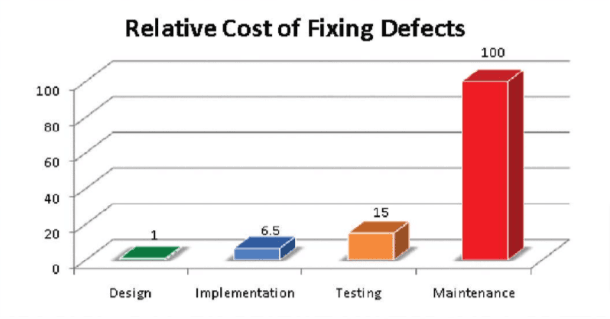Why Shift Left and Shift Right Testing Is a Game Changer in Software Development

Arrvind Balasubramaniam
QA Analyst

The world of software development is evolving faster than ever. Agile methodologies, DevOps pipelines, and CI/CD practices are pushing teams to deliver high-quality products at breakneck speed.
While writing clean, efficient code is crucial, the real secret to achieving faster, better development may lie in a redefined approach to testing. But as we sprint toward innovation, how do we ensure that quality isn't left behind? The answer lies in shifting testing left and right—a revolutionary approach that challenges traditional testing methods and reimagines when and how quality assurance is integrated in every stage of the software development lifecycle (SDLC).
What Does Shift Left and Shift Right Mean in Testing?
In traditional development, testing usually happens at the end of the cycle, right before deployment. This "reactive" approach can lead to costly delays and bugs slipping through to production.
Shift left involves moving testing earlier into the SDLC—starting at the design and development phases. The goal is to catch bugs early when they’re easier and cheaper to fix.
Shift right, on the other hand, emphasizes continuous testing in production environments. It ensures that your application performs well in real-world scenarios, capturing feedback to improve functionality, security, and user experience.
When you combine both strategies, testing becomes an ongoing part of the process, not just a final check. It's a feedback loop that makes your software stronger, faster, and more reliable.
Why Traditional Testing Practices Fall Short?
Old-school testing methods were linear and separate, meaning testing happened only after development was done. While this worked back in the day, today's fast-paced software development—filled with tight deadlines, complex systems, and constant updates—makes this approach outdated and inefficient.
It's time for a new way of testing that keeps up with the speed of modern tech! Let's delve deeper into the pitfalls of this approach:
Late-stage Testing Delays: In traditional workflows, testing happens at the tail end of the SDLC, which means defects are often uncovered just before deployment. This timing creates significant bottlenecks.
Fixing bugs late in the cycle is more expensive and resource-intensive, as it may require reworking earlier stages of development. Critical issues discovered late can derail release schedules, leaving teams scrambling to meet deadlines.

Image Source - ResearchGate
The above image depicts that defects found during testing are 15 times more expensive to fix than if detected during the design phase, and 2 times more costly than if identified during implementation. Catching issues early in the development process helps save both time and money.
Limited Real-World Validation: Traditional practices focus heavily on pre-release testing within controlled environments. While these tests are important, they don’t fully replicate the complexities of live user interactions or production-scale scenarios.
When apps face heavy traffic, unexpected bottlenecks can slow everything down, causing performance issues. But that's not all—security vulnerabilities can easily go unnoticed until hackers exploit them, leaving your system open to breaches. Don't wait until it's too late! Stay proactive with testing and monitoring to ensure your app runs smoothly and securely.
Lack of Continuous Feedback: Without testing embedded throughout the SDLC, developers and testers operate in isolation, missing opportunities for ongoing feedback.
Bugs introduced during coding may go unnoticed for weeks, complicating debugging efforts. The lack of immediate feedback means developers are less likely to understand the root cause of issues or adopt preventative practices.
Reactive Problem-Solving: Traditional testing relies on a reactive approach, focusing on identifying and fixing problems after they occur. This mindset contrasts sharply with the proactive approach required in agile and DevOps environments, where continuous improvement is key. Reactive problem-solving limits opportunities for early risk mitigation, increasing the likelihood of defects escaping into production.
Inefficient Use of Resources: Since testing is deferred to the end, it often results in overburdened QA teams, who must manage large volumes of test cases in a short time frame. QA teams are forced to triage issues, potentially overlooking critical defects. Developers, meanwhile, may sit idle during testing, waiting for bug reports instead of working on new features.
Why You Should Adopt This Approach?
Shifting testing both left and right isn’t just a trend—it’s a necessity for modern development teams striving to stay competitive. Here’s why this dual approach is a game-changer for your software lifecycle:
Shift Left: Catch Bugs Early
Imagine you’re building a house. If you discover structural issues only after the walls are up, it’s a major headache (and expense!). The same goes for software development. By incorporating testing from the start, teams can identify issues before they snowball into costly problems. For instance, a team that tests code during the development phase can catch a critical bug in a new feature before it reaches production, saving countless hours of rework.
Shift Right: Perfect Your Product in the Wild!
Once your software is live, the work isn’t over. Shift Right focuses on monitoring and optimizing performance in real-time. Picture this: your app goes live, and you implement A/B testing for a new feature. By rolling it out to a small segment of users first, you can gauge performance and gather feedback without risking the experience for your entire user base.
Boosting Productivity Across the Board
Integrating Shift-Left and Shift-Right not only improves product quality but also enhances overall productivity for teams and organizations. Here’s how:
-
By catching issues early, teams spend less time fixing bugs later in the process. This leads to faster development cycles and quicker releases.
-
A culture of shared responsibility for quality encourages communication and collaboration between developers, testers, and product managers. This synergy helps in aligning goals and fosters innovation.
-
Continuous testing in production allows for rapid feedback from users, enabling teams to make informed decisions quickly. This agility helps businesses adapt to market changes and user needs.
-
With fewer critical issues arising post-launch, teams can focus on new features and enhancements rather than spending time on fixing existing problems. This leads to better utilization of resources and a more innovative environment.
Foster Better Collaboration Between Teams
By including developers, QA teams, and operations from the start, you break down barriers and make the development process smoother. When everyone focuses on the same goal—creating high-quality software, the whole project runs more efficiently.
Improve Security and Compliance
Shifting right allows for ongoing security testing in live environments, where threats are most prevalent. This proactive monitoring helps identify vulnerabilities and ensures compliance with regulatory standards, minimizing risks to your application and reputation.
By embracing a "Shift Left and Shift Right" strategy, you’re not just testing better—you’re building a smarter, more agile development process that delivers exceptional outcomes. It’s time to move beyond the old boundaries of testing and transform how your team approaches quality assurance.
Power of Continuous Testing
Combining Shift-Left and Shift-Right creates a robust testing culture that not only boosts product reliability but also accelerates your time-to-market. This approach allows teams to stay agile and responsive. For instance, if a bug is identified post-launch, the team can quickly push out a hotfix while simultaneously working on the next set of features.
Real-World Examples of Shifting Left and Right
Real Life Use Case 1: Consider a team developing a mobile app. By conducting unit tests during the coding phase, they find and fix a bug related to user authentication early on, avoiding a frustrating user experience post-launch. This proactive approach not only enhances quality but also builds team confidence.
Real Life Use Case 2: Think of a streaming service that wants to introduce a new recommendation algorithm. They use canary releases to test it with a fraction of users. If the feature underperforms, they can improve or pull out it based on real user data, ensuring a seamless experience for everyone once fully launched.
Conclusion
Shifting testing left and right is a transformative approach that empowers development teams to deliver better software faster. By catching issues early and validating performance in real-world environments, you can create applications that delight users and drive business success.
The journey to delivering high-quality software begins with a strategic shift in how you approach testing. It’s time to leave behind outdated practices and embrace a future where speed and quality go hand in hand.
Now, the question is – Are you ready to transform your testing strategy? Contact us today to streamline your development process, boost efficiency, and deliver software that exceeds expectations! Explore how we can help you integrate shift-left and shift-right testing into your workflows.



